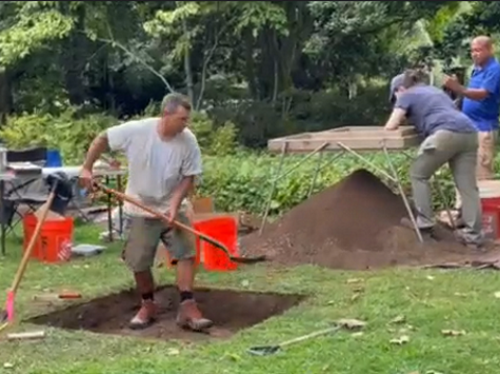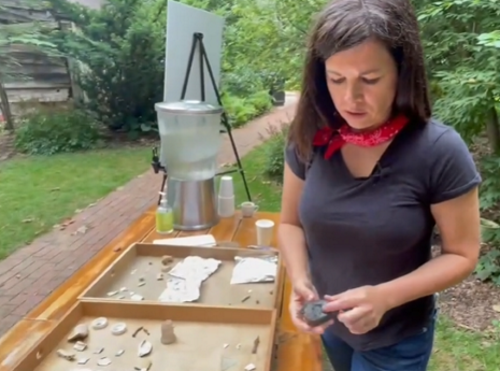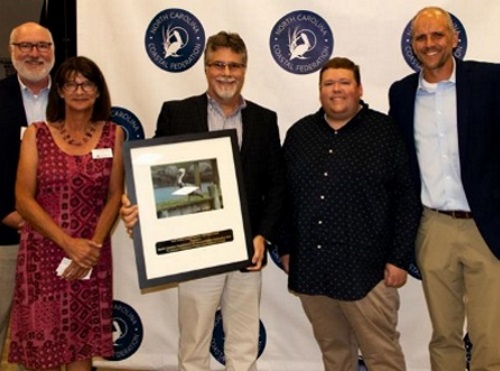FEDERAL ACTION
AASHTO Comments on Clean Water Certification Rule – AASHTO Journal
What Scientists Say about the Historic Climate Bill – Scientific American
Is the climate bill ‘historic’? Maybe not, historians say. – E&E News
The E-Bike Tax Credit Is Only Mostly Dead As Supporters Plot Next Steps – The Verge
FHWA Announces Final Rule to Reduce Roadway Fatalities in Dark Conditions by Improving Visibility with Retroreflective Pavement Marking – FHWA (Media release)
Biden-Harris Administration Announces More than $3 Billion in Funding for Two FEMA Programs to Increase Climate Resilience Nationwide – FEMA (Media Release)
COVID-19
The Pandemic Wasn’t Supposed to Hurt New York Transit This Much – New York Times
How global COVID-19 pandemic restrictions shed light on the relationship between transport and air pollution – University of Melbourne
INFRASTRUCTURE RESILIENCE AND SUSTAINABILITY
Delaware launches initiative to expand electric vehicle charging – WHYY
New York City EV pilot may lead to 10,000 on-street chargers by 2030 – electrive.com
California’s first ‘inland port’ to be built in Kern County – KERO-TV
Satellites Monitor Tiny Roadway Changes Along Texas Highway – Government Technology
Transportation recovery after disasters: A collaborative university/community model – National Institute for Transportation and Communities
Gov. signs infrastructure bond bill, with some amendments and vetoes – Massachusetts Municipal Association
AIR QUALITY
Electric Vehicles and State DOTs – AASHTO’s ETAP Podcast
Are electric trucks zero-emission vehicles? – FreightWaves
The new climate bill abandoned the type of electric vehicle that can make the biggest difference – Electrek
ENVIRONMENTAL JUSTICE
New Jersey Debates ‘Overburdened’ in Environmental Justice Rule – Bloomberg Law
Does the Climate Bill Throw Environmental Justice Under the Bus? – The Nation
NATURAL RESOURCES
Outsmart Vegetation-Related Power Outages – T&D World
CULTURAL RESOURCES
Illinois DOT to remove unmarked gravesites to complete upgrades to I-64 in Metro East – KMOV-TV
(Video)
Iowa’s first dual-language road signs added to US Highway 30 near Meskwaki Settlement – Des Moines Register
Law Department predicts challenges ahead for equity-based preservation programs – Austin Monitor
NYC’s public spaces are becoming increasingly hostile toward homeless people – City & State New York
Artwork In Northeast Kansas City Aims To Improve Pedestrian Safety – KSHB-TV
Our national parks still need fixing – The Hill (Opinion)
HEALTH AND HUMAN ENVIRONMENT/ACTIVE TRANSPORTATION
Houston’s new funding formula for building bike lanes – Axios
A neighborhood fights to be heard as Dulles planes drown out daily life – Washington Post
Can Greater Access to E-Bikes Get More People Biking? – Portland State University
TRB RESOURCES/ANNOUNCEMENTS
Adaptive Flood Relief Techniques to Enhance Resiliency – TBR (Webinar)
Climate Conversations: Wildfire – National Academies of Sciences, Engineering, and Medicine
FEDERAL REGISTER NOTICES
FY 2022 Competitive Funding Opportunity: Mobility, Access, & Transportation Insecurity: Creating Links to Opportunity Demonstration Research: Program Lead – FTA (Notice)
National Chemical Transportation Safety Advisory Committee; Vacancies – Coast Guard (Request for applications)
Safe Loading, Safe Powering and Flotation Compliance Guidance for Electrically Powered Recreational Vessels Policy Letter – Coast Guard (Notice of availability and request for comments)
The Hazardous Waste Electronic Manifest (e-Manifest) System Advisory Board; Notice of Public Meeting – EPA (Notice)
National Emission Standards for Hazardous Air Pollutants for Reciprocating Internal Combustion Engines; New Source Performance Standards for Stationary Internal Combustion Engines; Court Vacatur – EPA (Final rule)
Proposed Settlement, Clean Water Act Claim – EPA (Notice; request for public comment)
National Environmental Justice Advisory Council; Notification of Virtual Public Meeting – EPA (Notification)
Notice of Intent To Prepare a Programmatic Environmental Impact Statement for Future Wind Energy Development in the New York Bight; Extension of Comment Period – Bureau of Ocean Energy (Notice)
Notice of Intent To Prepare a Draft Environmental Impact Statement for the Line 5 Tunnel Project, Mackinac and Emmet Counties, Michigan – U.S. Army Corps of Engineers (Notice of intent)
Bureau of Land Management Request for Information on Federal Old-Growth and Mature Forests – Forest Service and Bureau of Land Management (Request for information; Extension of comment period)
Joint Record of Decision for the Final Environmental Impact Statement for the Vineyard Wind 1 Offshore Wind Energy Project; Notice of Availability of Record of Decision Supplements – Bureau of Ocean Energy Management (Notice)



